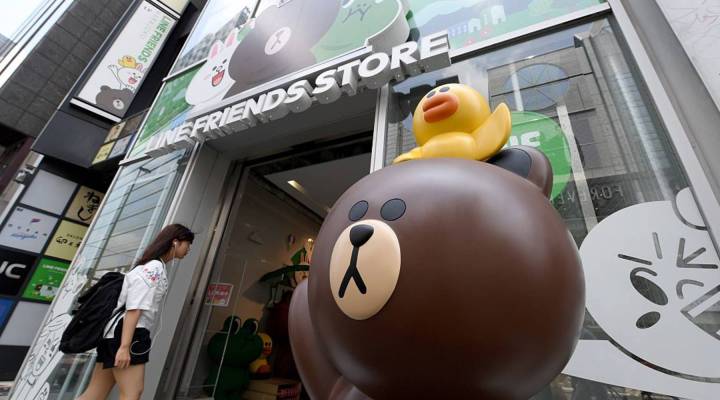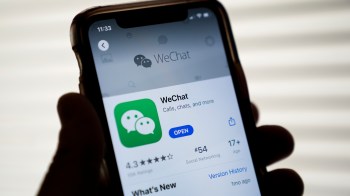
Line debuts about 30 percent higher than initial price
Share Now on:
Line debuts about 30 percent higher than initial price

The emoji-friendly messaging company Line started trading on the New York Stock Exchange Thursday morning, opening at $42 a share— nearly 30 percent more than its initial offering of $32.84. It closed at $41.58, giving it a market value of around $8 billion.
Line is one of several massively popular messaging apps that many Americans have likely never heard of. They command large, dedicated audiences in Asia, and on their face they seem identical. Free international calling and texting, along with some commerce. But apps like WeChat and Line go so much further, letting users get rides, buy movie tickets, make doctors appointments and pay bills. Some of the most innovative American tech companies — Snapchat, Facebook, Apple and Google — are trying to replicate these messaging apps’ success with their own.
The whole business can be pretty confusing, so we’ve compiled a list of the major ones to see how they stack up.
| App | Monthly active users | Public or private | Estimated 2015 revenue | How’s it make money? | What’s its unfair advantage? |
| Line | 218 million | Public | $1.1 billion | The platform supports advertising and gaming, but it’s known for its stickers. Line sells thousands of emojis and animations featuring its own characters, and users send hundreds of millions a day. The company also sells merchandise based on its stickers. | The app was created to help with communication after Japan’s 2011 earthquake and tsunami, but it’s built a healthy business around its thousands of stickers and the merchandising for them. Line also has an algorithm to help users find the right sticker. |
| 1 billion | Public, via Facebook | $0 | WhatsApp used to charge $1 per year after the first year, but ended that earlier this year. It’s working on monetization in tandem with Facebook, which has not attempted to monetize since buying WhatsApp for $19 billion. | WhatsApp was the first major messaging app of its kind, and it’s built the biggest user base of them all, second only to its parent company Facebook. It was also the first major messaging app to offer encryption, and it rolled out end-to-end encryption on all forms of communication this spring. | |
| Messenger | 900 million | Public, via Facebook | $0 | Facebook hasn’t yet directly monetized Messenger. The app is spun off Facebook itself, which make billions in mobile advertising (Messenger users don’t strictly need a Facebook account to join). CEO Mark Zuckerberg has said Facebook will see how businesses use the platform first before it tries to monetize. | Messenger has seen remarkable growth in the past two years — thanks to Facebook migrating all its mobile users to the app in 2014. Messenger is able to draw on Facebook’s trove of user data as the company introduces chatbots and branded pages to the app on its path to monetization. |
| 762 million | Public, via Tencent | Not available | WeChat is owned by the Chinese internet giant Tencent, which posted $15.8 billion in revenue last year. Tencent doesn’t report WeChat revenue separately, but the app has reportedly built a robust advertising business alongside Tencent’s mobile gaming business. WeChat also has a small transaction fee for payments. | WeChat is woven into daily Chinese life like no other messaging app around the world. Users can effectively run their whole lives with it. According to Bloomberg: “People use WeChat to pay rent, locate parking, invest, make a doctor’s appointment, find a one-night stand, donate to charity.” | |
| Snapchat | Not available (150 million daily users) | Private | $59 million | Snapchat’s revenue estimates come from a pitch deck that leaked earlier in the year. The company has experimented with a few monetization strategies, including selling lenses, filters and replays to users and brands. The app also features video advertising with more on the way. | With its singluar model based on expiring messages, Snapchat also has unique advertising products like lenses and customized filters. Plus, the company has partnerships with many media companies via its Discover feature and rapidly expanding real estate for video advertising. |
There’s a lot happening in the world. Through it all, Marketplace is here for you.
You rely on Marketplace to break down the world’s events and tell you how it affects you in a fact-based, approachable way. We rely on your financial support to keep making that possible.
Your donation today powers the independent journalism that you rely on. For just $5/month, you can help sustain Marketplace so we can keep reporting on the things that matter to you.


















